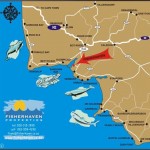Bot River Estuary – Should we interfere?
- Feb
- 08
HEATED DEBATE
In the late 1970s there was considerable and often heated debate about whether or not the Bot river estuary should be artificially opened. Some felt that this was unnecessary manipulation of a natural system and disapproved of the destruction that followed. Others argued that artificial opening was essential to keep the estuary the way it was and that if it were not opened, the fish would eventually die out. There are so many different parties interested in the estuary, with so many conflicting interests, that it is impossible to design a management policy that will satisfy everyone. But whatever policy is adopted, it should take into account both the needs of the people using the estuary and the importance of conserving the estuary in an ecologically healthy state.
The one fact that emerged early was the almost complete absence of scientific information on the Bot river estuary. Because of this, the South African National Committee for Oceanographic Research agreed to fund a six-year research programme. The purpose of this was two-fold. Firstly, to investigate the estuary as a system with a view to developing a sound management strategy and secondly, to gain some insight into the dynamics of closed estuaries in general, since these are quite common in South Africa.
This research was completed in 1985 and most of the findings have already been published in the scientific literature (a few are listed in the section “Further Readings”). Such literature may, however, be difficult to get hold of and is laborious to interpret. This article is intended to communicate the research findings to the general public. It is being produced partly in gratitude to all those who expressed interest and concern and gave support to the research; partly as a source of information; partly to inform anyone interested in the Bot river estuary and especially in the hope of enlisting the help and co-operation of parties interested in the future management of the estuary.
GENERAL BACKGROUND
The Bot river estuary lies at the bottom of the broad and fertile Bot river valley. Its catchment basin includes the towns of Caledon, Botrivier, Kleinmond and Hawston. The estuary itself measures about six by two kilometres and is quite shallow, having an average depth of 1.5 metres. It is fed by two rivers, the Bot river itself and the Afdaks river. A barrier of sand dunes separates the estuary from the sea, effectively damming it. Lying immediately behind this barrier to the west of the estuary and joined by a narrow connection called “Die Keel”, is a shallow extension known as Rooisand. Aerial photographs taken in the 1930s show that this has appeared only within the last 50 years, developing on the site of a former dune-field which has seemingly been blown away. The importance of Rooisand is that it forms a connection between the Bot river and Kleinmond estuaries. As we will describe below, this is of vital importance to the manner in which the Bot river estuary functions.
These two estuaries together form an estuarine system, since water can flow from one estuary to the other (in either direction), depending on the water levels and rainfall patterns in the catchment basin. The Kleinmond Estuary is fed mostly by the Lamloch River.
Recent Posts
- The Pros And Cons Of Solar Power
- 3 Things Private Sellers Wish they Knew (That Estate Agents Do!)
- Top 5 Tips For Sellers in a Buyers’ Market
- Top 5 Tips For Buyers In A Buyers’ Market
- Your Property Title Deed – A Short History
Contact Us
Fisherhaven Properties
Frans Theunissen
Tel: 082 559 4290
Tel: 028 315 1990
Fax: 086 660 4823
info@fisherhaven.co.za

Please ask us about long-term property rentals in the area.


